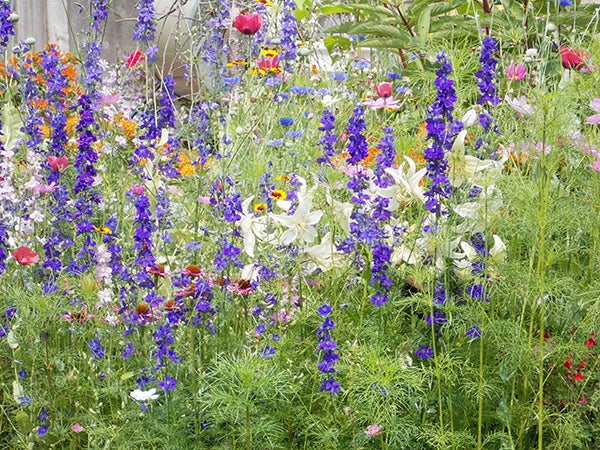The tasks of a gardener are never really finished
Published 9:00 am Sunday, February 14, 2016

White lilies were added to the cutting garden two years ago, and last year many more were added to bring even more color and interest to the garden. – Carol Hegel Lang/Albert Lea Tribune
Serendipity Gardens by Carol Hegel Lang
Gardens are never finished. They are always a work in progress and that can be a little intimidating to those that are new at this wonderful pastime. Every gardening season we will have success stories and failures and plants that we don’t care for. That astilbe I planted in the shady section of the garden is now in full sun and not a happy camper, as they prefer shade and a damper soil.
Most of my gardens have been expanded over the years, and I have added new ones and have moved plants from one garden to another as they multiplied or needed dividing. Friends have given me flowers I have had to make room for in my very crowded beds. Likewise, I have given plants to friends and family when I needed to divide them or they didn’t do well in my gardens.
Some people totally renovate their gardens periodically, but I prefer to just make changes in what I already have. Two years ago I expanded the front entry garden, nearly doubling the size of it. Now, part of the garden is shaded by trees while the very front part has sunshine a good part of the day. This allowed me to add varieties that prefer partial to full sun. It has made this garden a real statement now, where before it really just blended into the landscape with all of the trees and shrubs.
When the oval garden in the backyard was created, a large bur oak tree shaded the entire yard, limiting my choice to flowers that did well in medium shade. I planted hosta, bleeding heart, astilbe and Virginia bluebells. Begonias were planted in containers to add color and it was a very peaceful garden. When the tree had to be taken down, the gardens were in full sun, allowing me to add many different plants.
The small garden on the south side of the walkway had a maple tree I planted in the center of the garden when I started this new garden. It wasn’t too many years and a wind storm broke the top off this young tree, resulting in my taking it out. To add some height to this garden, a wooden tuteur took its place. Because this garden is located in full sun I planted iris, daylily and goatsbeard along the back fence where it receives partial sun, clematis along two sides of the fence, a climbing rose (William Baffin), phlox, peony and tiger lilies. Over the years I have tried other plants, some that did well and others that didn’t.
Walkways have been added over the years to make it easier to navigate the gardens, and I will probably add more in the years to come. A windstorm took a small arbor when a tree fell on it one year, and it was replaced with another one. A climbing rose that was on this arbor didn’t make the winter of 2013. In its place I have added a hydrangea for color, phlox and poppies along with a small shrub.
The fall I renovated garden No. 2, I removed several roses and added my favorite hydrangea, pinky winky, that is a small tree adding height and interest all year with its blooms. The small garden is in partial sun later in the day, so I have kept the plantings to ones that do well in both full and partial sun. Three chives bloom early in spring along with daffodils, followed by grape-colored daylilies, annual marigolds and lantana. The small garden is the entrance to the gardens along the west fence and can be seen while sitting on the bench located under the large pergola.
Every time that I think a garden is finished, I see places where I can add more flowers or garden sculptures, or perhaps I just want to change the color scheme in it. One of my favorite hardscapes to add to gardens are rocks of different shapes and textures. Trees and shrubs add so much texture to the gardens, and the past couple of years I have started adding small hydrangeas where I have room. I love how they give me winter interest when the rest of the gardens are covered in snow. What changes will be made this season, I wonder?
“There is no ‘The End’ to be written, neither can you, like an architect, engrave in stone the day the garden was finished; a painter can frame his picture, a composer notate his coda, but a garden is always on the move.” — Mirabel Osler
Carol Hegel Lang is a green thumb residing in Albert Lea. Her column appears weekly. Email her at carolhegellang@gmail.com.



